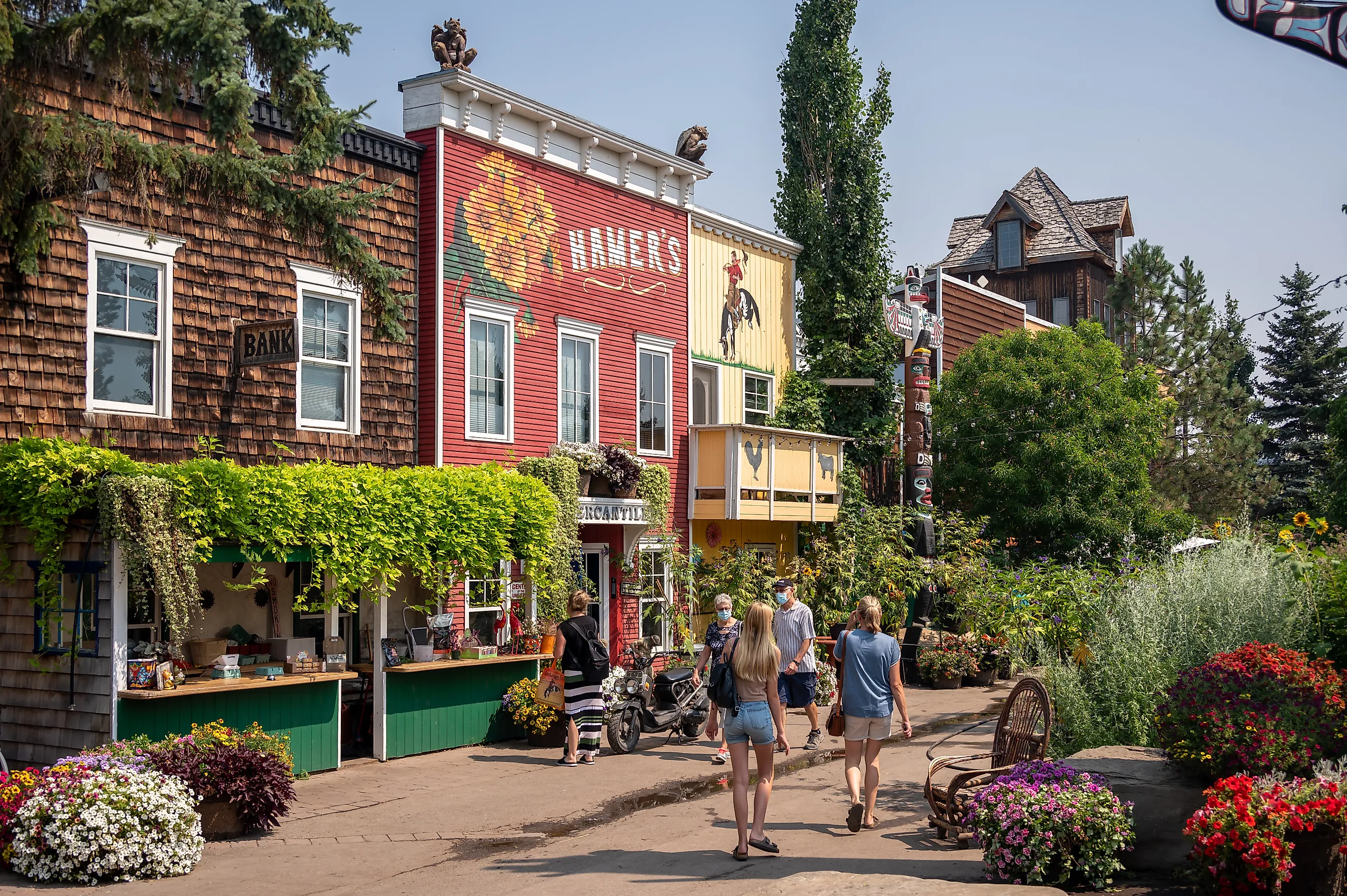
Top 10 Towns in the Prairies To Visit In 2025
Canada’s Prairie provinces—Alberta, Saskatchewan, and Manitoba—stretch across the heart of the country, where big skies meet rolling farmland and rugged badlands. Scattered across these provinces are small towns where history, culture, and natural beauty meet in unforgettable ways. Away from big-city bustle, they offer local charm, authentic experiences, and landscapes that stretch for miles. Join us on a journey through ten Prairie towns worth adding to your travel list.
Okotoks, Alberta
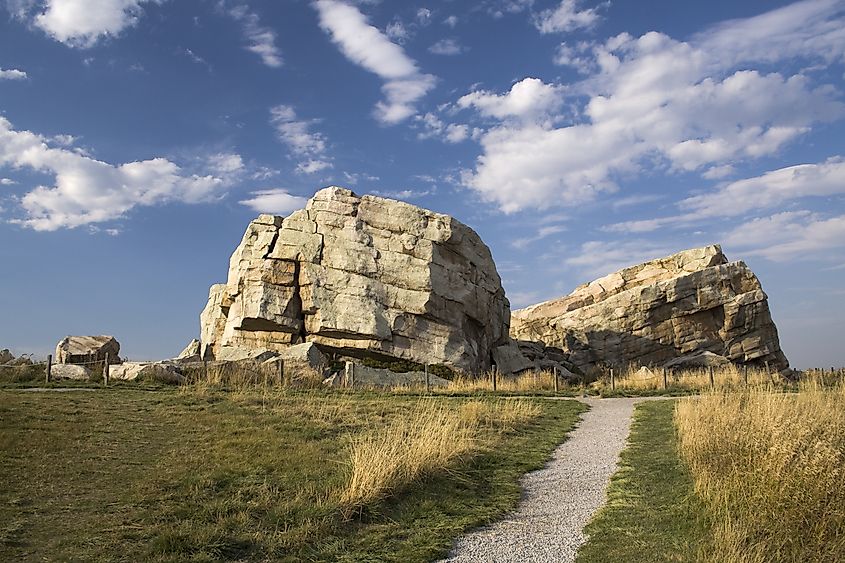
Evolving from a prairie railway stop into a thriving small-town destination, Okotoks, Alberta, located about 38 km (24 mi) south of Downtown Calgary, offers a perfect mix of culture, history, and nature. Start exploring the Olde Towne, wandering past art galleries, boutiques, and cafés housed in historic buildings before strolling the scenic pathways along the Sheep River. Be sure to venture outside of town, where the Okotoks Erratic, or “Big Rock,” a massive glacial boulder steeped in Blackfoot legend, sits. And look out for special events at Champion Park—a historical railway station and now events center—to feel the energy of this once bustling town.
Fort Macleod, Alberta

Founded in 1874 as the first outpost of the North-West Mounted Police, Fort Macleod, Alberta, overlooking the Oldman River, blends deep prairie history with small-town charm. Begin your visit at the Fort Museum of the NWMP and First Nations Interpretive Centre, where costumed guides perform the famous NWMP Musical Ride, the traditional Cavalry Drill, bringing the past vividly to life. Stroll along Main Street, lined with century-old sandstone buildings, before catching a performance at the restored not-for-profit Empress Theatre, a vaudeville and theatrical performance venue that has entertained locals since 1912.
Drumheller, Alberta
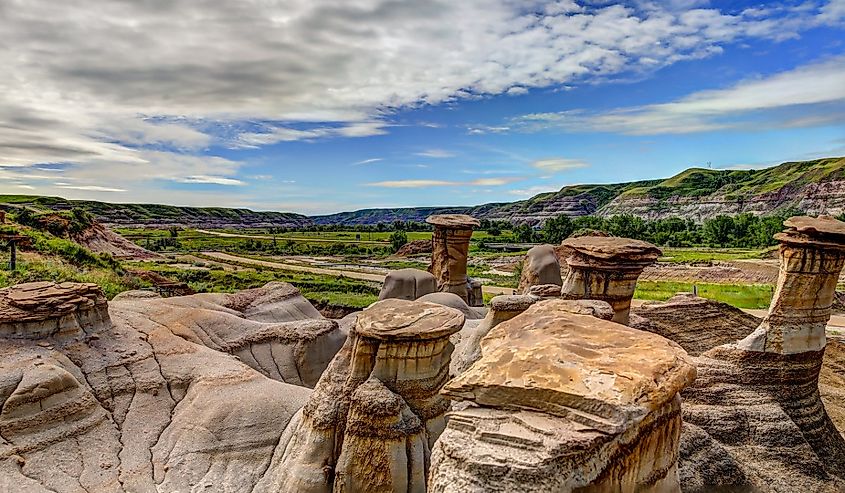
Once a small coal mining town, founded by Samuel Drumheller in 1911, Drumheller, Alberta, has transformed into the heart of the Canadian Badlands, where dinosaur history meets wind-sculpted canyons and towering hoodoos. Begin your visit at the world-renowned Royal Tyrrell Museum, home to a legendary collection of dinosaur fossils. Then venture into the Badlands to marvel at the Willow Creek Hoodoos, strange sandstone pillars sculpted by centuries of wind and rain. End your day at the Atlas Coal Mine National Historic Site, where wooden tipples and underground tunnels reveal stories of the area's early coal mining past.
Moose Jaw, Saskatchewan
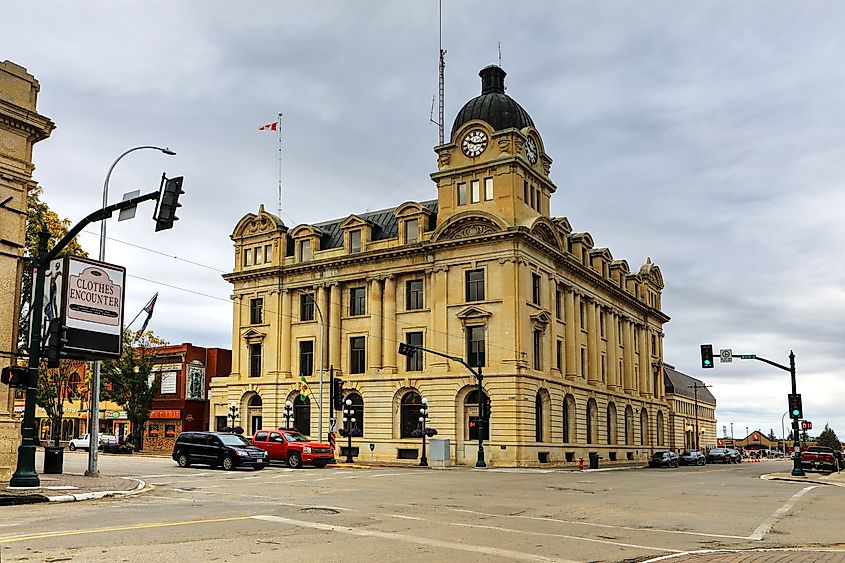
What started as a railway hub with a lively prohibition-era underworld of smuggling and gangsters, Moose Jaw, Saskatchewan, has reinvented itself as a destination for history, art, and relaxation. Explore the vibrant downtown area, where more than 40 murals splash color across brick walls, each depicting a scene from the city’s colofrul past. Residents of Moose Jaw—known as Moose Javians—take pride in their storied heritage, so be sure to step below the streets on the Tunnels of Moose Jaw tours to learn more about the city’s notoriety. End the day in the relaxing comfort of the Temple Gardens Mineral Spa, soaking in world-renowned geothermal mineral pools.
Prince Albert, Saskatchewan
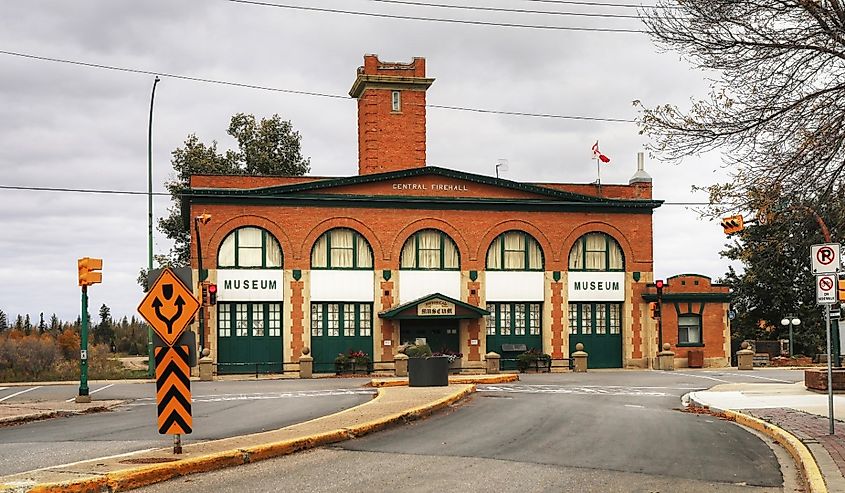
As the last major centre along the route to the resources of northern Saskatchewan, Prince Albert is known as the “Gateway to the North.” The wide-open landscape of this prairie town makes residents keenly aware of the sky, where shifting clouds create dramatic patterns and often deliver breathtaking sunrises and sunsets. About an hour away from the town, the Prince Albert National Park, a sanctuary for birds, moose, elk, caribou, and bears, is the perfect way to explore the natural beauty of the region within this 3,875 square km park. Then explore the Prince Albert Historical Museum, where exhibits trace the region’s fur-trade and settler past. If you want to include hiking, biking, or cross-country skiing as part of your visit, head to Little Red River Park.
Swift Current, Saskatchewan
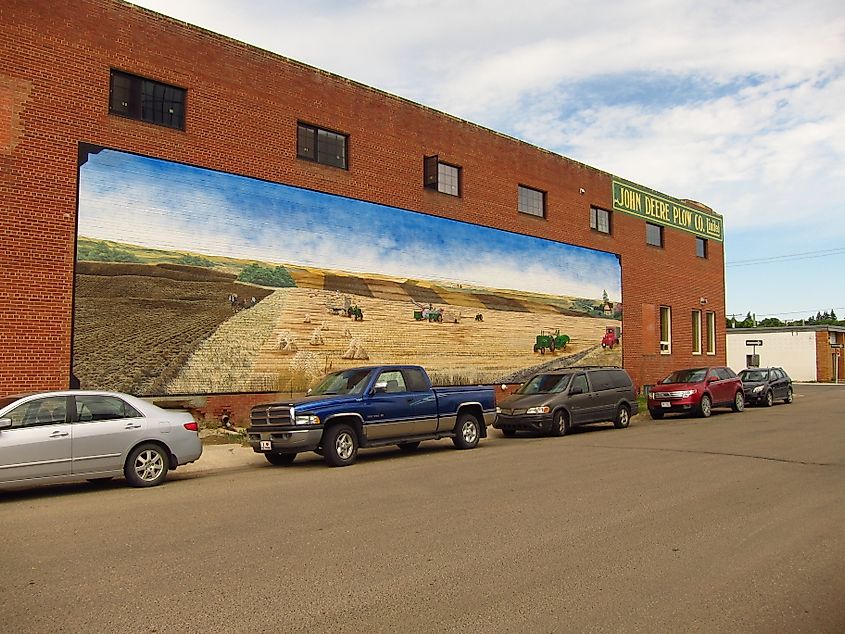
Swift Current, named for the creek that winds through this area of the prairie, began as a railway settlement in 1882. To get a feel for what is now a lively city, begin your visit downtown at the crown jewel of historic buildings, the Lyric Theatre, where traveling vaudeville performers entertained the residents. Plan your visit for summer to catch the SaskPower Windscape Kite Festival, when the prairie sky bursts with color, or if you have the time, head out of town to the Great Sand Hills, the largest active sand dunes in Canada, a surreal landscape perfect for exploring on foot.
Morden, Manitoba
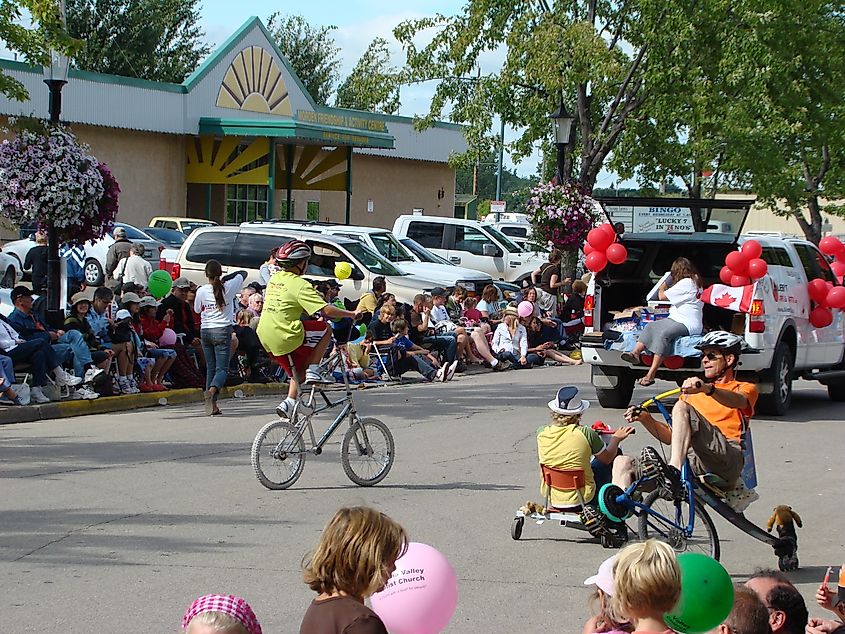
Millions of years before its founding in 1882, Morden, Manitoba, was completely underwater, leaving behind a rich prehistoric history and beautiful landscape for visitors. Once a stop along the Canadian Pacific Railway, Morden now attracts visitors eager to meet “Bruce,” the world’s largest mosasaur at the Canadian Fossil Discovery Centre. Time your visit for late August to experience the famous Corn & Apple Festival, with plentiful corn, live music, and local hospitality. For a true prairie outdoor experience, head to Lake Minnewasta, where summer brings swimming, fishing, canoeing, and sailing, while winter offers snowshoeing, snowmobiling, and ice fishing.
Steinbach, Manitoba
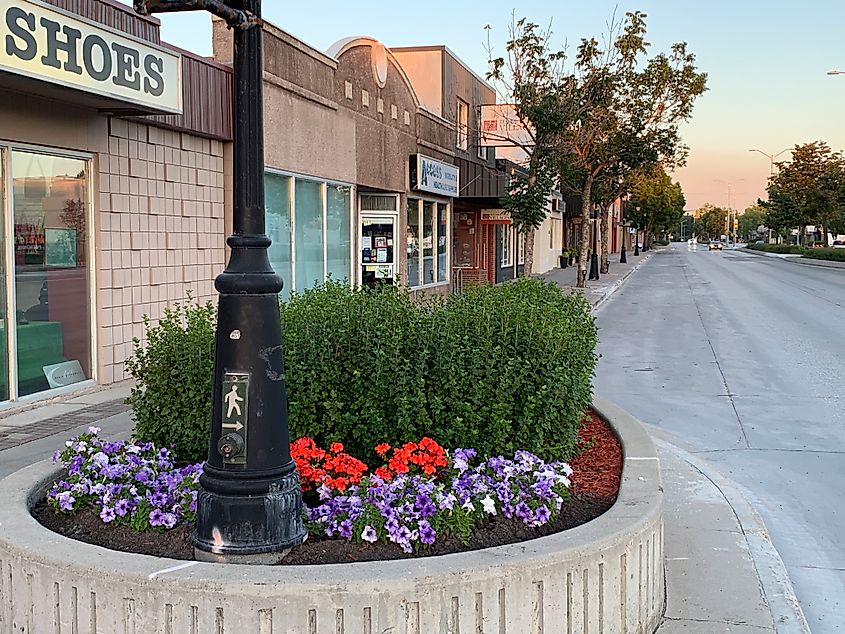
Located on the eastern edge of the Canadian prairies and founded by Mennonite settlers in the late 1800s, Steinbach blends history and culture with modern prairie hospitality. Start your visit at the Mennonite Heritage Village, designed as a traditional German street village, where a towering windmill, costumed interpreters, and heritage buildings offer a glimpse into pioneer life of the early settlers. Visiting in June? Don’t miss the Summer in the City Festival, when Main Street fills with music, art, food vendors, and kids’ activities. For year-round recreation, be sure to visit A.D. Penner Park, which offers walking trails, playgrounds, picnic spots, and winter tobogganing hills.
Portage la Prairie, Manitoba
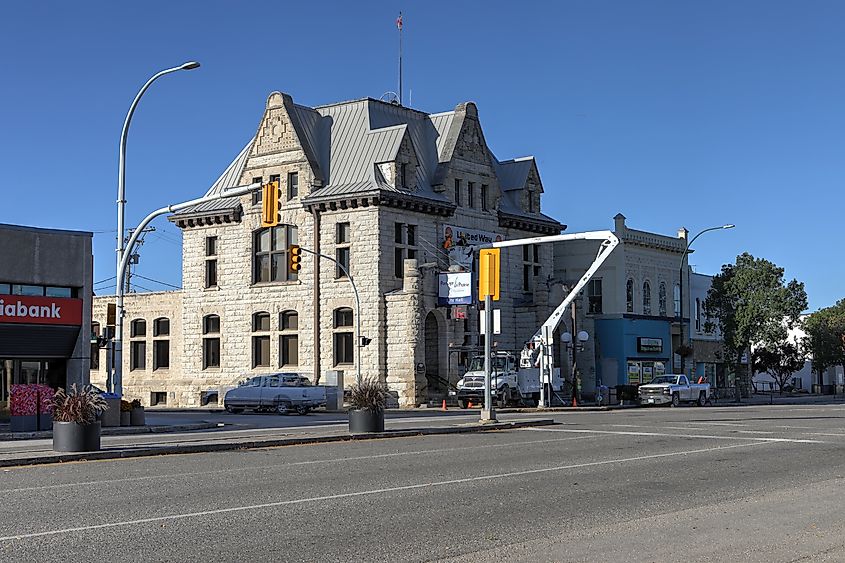
Portage la Prairie began in the late 1800s as a trading post and the place where canoes could be carried overland between the river and Lake Manitoba. Start your visit at Crescent Lake, the area's most recognizable feature, a 14-kilometer loop through Island Park, where you can walk, bike, or simply watch pelicans. Explore Fort la Reine Museum’s 25 historic buildings, including a pioneer church, blacksmith shop, and schoolhouse, that bring early prairie life into focus. In summer, enjoy nightly live entertainment, midway rides, livestock and horse shows, home living and quilting displays, a wide range of vendors, food concessions, a petting zoo, live reptiles, and plenty of activities for kids at the Portage Ex Fair.
Dauphin, Manitoba
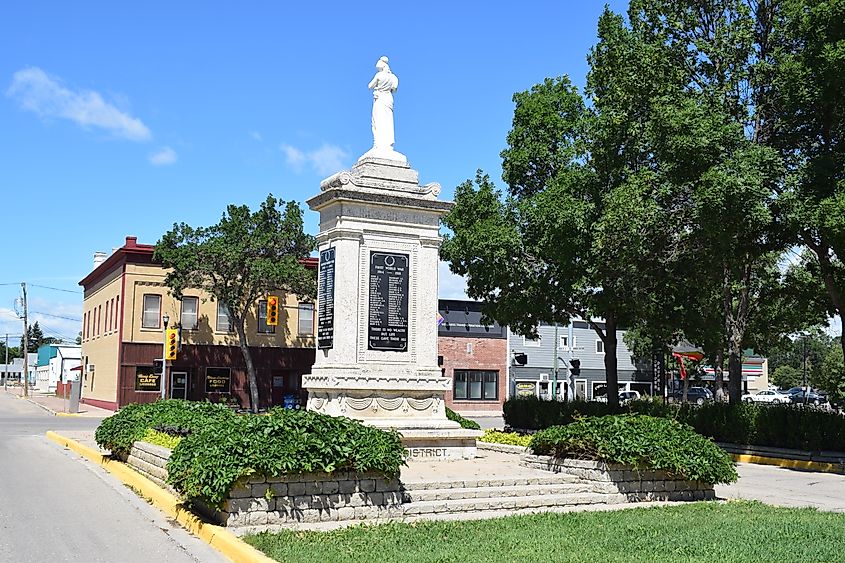
Known as the City of Sunshine and set against the backdrop of Riding Mountain National Park, Dauphin blends cultural heritage with easy access to the beautiful outdoors. Begin your visit at the Fort Dauphin Museum, where reconstructed palisades, a trading post, and pioneer buildings trace the region’s early history. Time your trip for August to experience Canada’s National Ukrainian Festival, a three-day celebration with folk dancing, music, food, and vibrant cultural displays. Just minutes away, Riding Mountain National Park offers hiking, wildlife viewing, camping, and stunning lake vistas, perfect for rounding out your prairie town adventure.
From dinosaur fossils and desert-like dunes to Ukrainian festivals and pioneer museums, these prairie towns offer a side of Canada many travelers overlook. Whether you come for history, culture, outdoor adventure, or small-town charm, each stop promises authentic prairie experiences worth slowing down for. Plan your 2025 journey now and discover the heart of Canada beyond the big cities.











